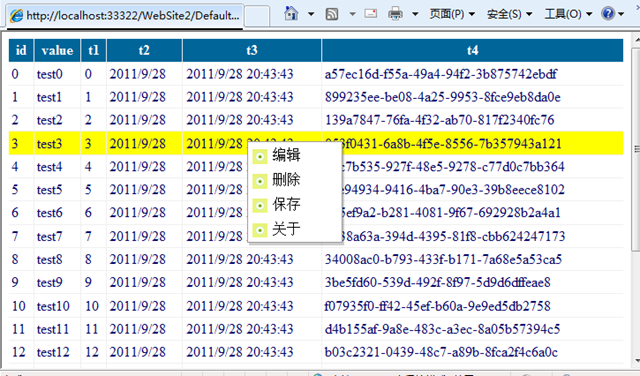
在前端开发中,JavaScript 数据类型检测是绕不开的基础技能,写代码时,你得知道变量到底是字符串、数组,还是 null/undefined;处理接口返回数据时,也得确认数据结构类型才能安全操作,可 JavaScript 里数据类型检测方法不少,typeof、instanceof、Object.prototype.toString 这些有啥区别?不同场景该咋选?今天咱们逐个拆解,把这些方法的“脾气”摸透。
typeof:快速但“粗线条”的检测
typeof 是最基础的检测工具,用法简单到极致——直接跟在变量前,像这样 typeof 变量,它会返回一个字符串表示类型,先看几个例子:
typeof 123; // 'number'
typeof '前端'; // 'string'
typeof true; // 'boolean'
typeof function(){}; // 'function'
typeof undefined; // 'undefined'
typeof null; // 'object' (这里是历史遗留 Bug)
typeof []; // 'object'
typeof {}; // 'object'能发现,typeof 对基本类型(除了 null) 检测很直接:number、string、boolean、undefined、function(注意 function 算“特殊引用类型”)都能快速识别,但它对引用类型和 null 就“犯迷糊”:
所有对象(包括数组、普通对象、日期对象等),
typeof都返回'object',唯一例外是function,因为函数在 JS 里算“一等公民”,被单独处理了。null会返回'object',这是 JS 设计初期的 Bug——早期把null当作“空对象指针”,导致typeof null结果一直没修正,现在已成历史遗留问题。
typeof 适合快速判断基本类型(排除 null)和函数,比如写工具函数时先判断参数是不是函数,或者变量是否未定义,但要检测对象具体是数组、对象还是日期,typeof 就不够用了。
instanceof:看“原型链”的继承关系
instanceof 检测的是“某个对象是否是某个构造函数的实例”,原理是沿着原型链往上找,看构造函数的 prototype 是否在实例的原型链上,用法是 对象 instanceof 构造函数,返回布尔值,看例子:
const arr = [];
arr instanceof Array; // true(数组是 Array 的实例)
arr instanceof Object; // true(Array 继承自 Object,原型链里有 Object.prototype)
const dt = new Date();
dt instanceof Date; // true
dt instanceof Object; // true
function Person() {}
const p = new Person();
p instanceof Person; // true能发现,instanceof 适合判断引用类型的“继承关系”,但也有明显局限:
基本类型用不了:
let num = 1; num instanceof Number会返回false,因为基本类型不是对象,除非用包装对象:const numObj = new Number(1); numObj instanceof Number; // true,但实际开发很少这么用基本类型的包装对象。跨执行环境(iframe)失效:如果页面里有
iframe,iframe里的数组和父页面的Array构造函数原型链不共享,比如父页面传一个数组到iframe里,arr instanceof Array会返回false,因为iframe里的Array是另一个构造函数。无法区分
Object子类:比如数组同时是Array和Object的实例,arr instanceof Object也为true,没法精准区分“纯对象”和数组、日期这些特殊对象。
instanceof 更适合在同执行环境下,判断对象是否属于某个自定义构造函数的实例,比如检测业务里的自定义类实例,但检测内置对象(数组、日期)或跨 iframe 数据时,得谨慎用。
Object.prototype.toString:精准的“类型指纹”
这是 JS 里最精准的类型检测方法,原理是调用 Object.prototype 上的 toString 方法(因为其他对象的 toString 可能被重写,比如数组的 toString 是转成逗号分隔字符串),通过 call 改变 this 指向,让目标变量成为 toString 方法的调用者,最终返回 '[object 类型]' 格式的字符串,用法像这样:
Object.prototype.toString.call(null); // '[object Null]'
Object.prototype.toString.call(undefined); // '[object Undefined]'
Object.prototype.toString.call(123); // '[object Number]'
Object.prototype.toString.call('前端'); // '[object String]'
Object.prototype.toString.call([]); // '[object Array]'
Object.prototype.toString.call({}); // '[object Object]'
Object.prototype.toString.call(new Date()); // '[object Date]'
Object.prototype.toString.call(function(){}); // '[object Function]'
Object.prototype.toString.call(Symbol()); // '[object Symbol]'(ES6 新增)能看到,不管是基本类型(包括 null/undefined)、内置对象还是自定义对象,它都能精准识别。null 终于不再返回 'object',而是 '[object Null]';数组和普通对象也能明确区分。
为啥要用 call?因为每个对象的原型上可能重写了 toString,比如数组的原型:
const arr = []; arr.toString(); // ''(数组的 toString 是把元素转成字符串拼接,空数组返回空字符串) // 而 Object.prototype.toString 是通用的类型检测逻辑,所以要通过 call 让 arr 作为 this 调用 Object.prototype 的 toString
这种精准性让它成为很多类库(jQuery 的 $.type)的底层实现,实际开发中,如果你需要绝对精准的类型判断(比如区分 null 和对象,区分数组和普通对象),Object.prototype.toString 是首选。
constructor:跟着“构造函数”找根源
每个函数(包括构造函数)的原型上都有 constructor 属性,指向自身,对象的 constructor 就是创建它的构造函数,用法是 变量.constructor === 构造函数,
const arr = [];
arr.constructor === Array; // true
const num = 1;
num.constructor === Number; // true(这里是隐式调用 Number 包装对象,基本类型会自动装箱)
function Person() {}
const p = new Person();
p.constructor === Person; // true但 constructor 有个致命问题:可被修改,比如重写原型时,如果没手动指定 constructor,就会丢失正确指向:
function Dog() {}
Dog.prototype = {}; // 重写原型,新原型的 constructor 是 Object
const dog = new Dog();
dog.constructor === Dog; // false(现在是 Object)和 instanceof 一样,跨执行环境(iframe)时构造函数不共享,导致检测失效。constructor 适合简单场景下快速判断,且确保构造函数没被修改的情况,但实际开发中因为可修改性,很少单独用它做严谨检测。
新语法糖:ES6+ 专属检测方法
除了传统方法,ES6 及以后还新增了一些更便捷的检测工具,针对性解决特定场景痛点:
1 Array.isArray:专治数组检测
判断一个值是否是数组,早期得用 Object.prototype.toString.call(arr) === '[object Array]',现在有了 Array.isArray,写法更简洁,且能解决跨 iframe 问题:
Array.isArray([]); // true
Array.isArray({}); // false
// 即使数组来自 iframe,Array.isArray 内部也做了兼容处理,返回正确结果2 Number.isNaN:精准抓 NaN
传统的 isNaN 有个坑:它会把非数字先转成数字再判断,导致 isNaN('abc') 返回 true(因为 'abc' 转数字是 NaN),而 Number.isNaN 只对真正的 NaN 返回 true:
Number.isNaN(NaN); // true
Number.isNaN('abc'); // false
Number.isNaN(123); // false3 其他内置对象的检测
像 Date、RegExp 这些内置对象,虽然没有像 Array.isArray 这样的专属方法,但结合 Object.prototype.toString 依然是可靠方案,比如判断是否是日期对象:
function isDate(val) {
return Object.prototype.toString.call(val) === '[object Date]';
}实战场景:选对方法少踩坑
了解了各种方法的特性,实际开发中得根据场景选工具,举几个典型场景:
1 检测基本类型(非 null/undefined)
用 typeof 最省心,比如写个函数,只接受字符串参数:
function print(str) {
if (typeof str === 'string') {
console.log(str);
} else {
console.warn('参数必须是字符串');
}
}2 检测引用类型是否是某构造函数实例(同环境)
用 instanceof,比如业务里有个自定义购物车类 Cart,判断实例后调用方法:
class Cart {
addItem() { /* 加商品逻辑 */ }
}
const myCart = new Cart();
if (myCart instanceof Cart) {
myCart.addItem('手机');
}3 精准检测所有类型(包括 null/数组/日期)
用 Object.prototype.toString,比如处理后端接口返回的未知数据,分情况处理:
function handleData(data) {
const type = Object.prototype.toString.call(data);
if (type === '[object Array]') {
data.forEach(item => console.log('数组元素:', item));
} else if (type === '[object Object]') {
console.log('对象属性:', Object.keys(data));
} else if (type === '[object Null]') {
console.log('数据是 null,做兜底处理');
} else {
console.log('其他类型:', type);
}
}4 检测数组(现代项目)
直接用 Array.isArray,比 instanceof 更可靠(解决 iframe 问题),比 Object.prototype.toString 更简洁:
function renderList(data) {
if (Array.isArray(data)) {
data.forEach(item => {
// 渲染列表项
});
}
}记清每种方法的“特长”
把这些方法的核心特点整理成表格,方便快速对比:
| 方法 | 适用场景 | 优点 | 缺点 |
|---|---|---|---|
typeof | 基本类型(除 null)、函数 | 简单快速 | 无法区分对象细分类型 |
instanceof | 同环境下引用类型的继承关系 | 体现原型链关系 | 基本类型无效、跨环境失效 |
Object.prototype.toString | 所有类型(包括 null/undefined) | 精准无歧义 | 写法稍繁琐 |
constructor | 简单场景下判断构造函数 | 直接关联构造函数 | 可被修改、跨环境失效 |
Array.isArray/Number.isNaN | 专属类型检测 | 简洁、解决特定痛点 | 仅针对个别类型 |
说到底,没有“万能方法”,只有“适合的方法”,记住每个方法的适用边界,遇到类型检测需求时,先想清楚要检测什么、场景是什么样的,再选工具,就能少踩坑啦~







网友评论文明上网理性发言 已有0人参与
发表评论: